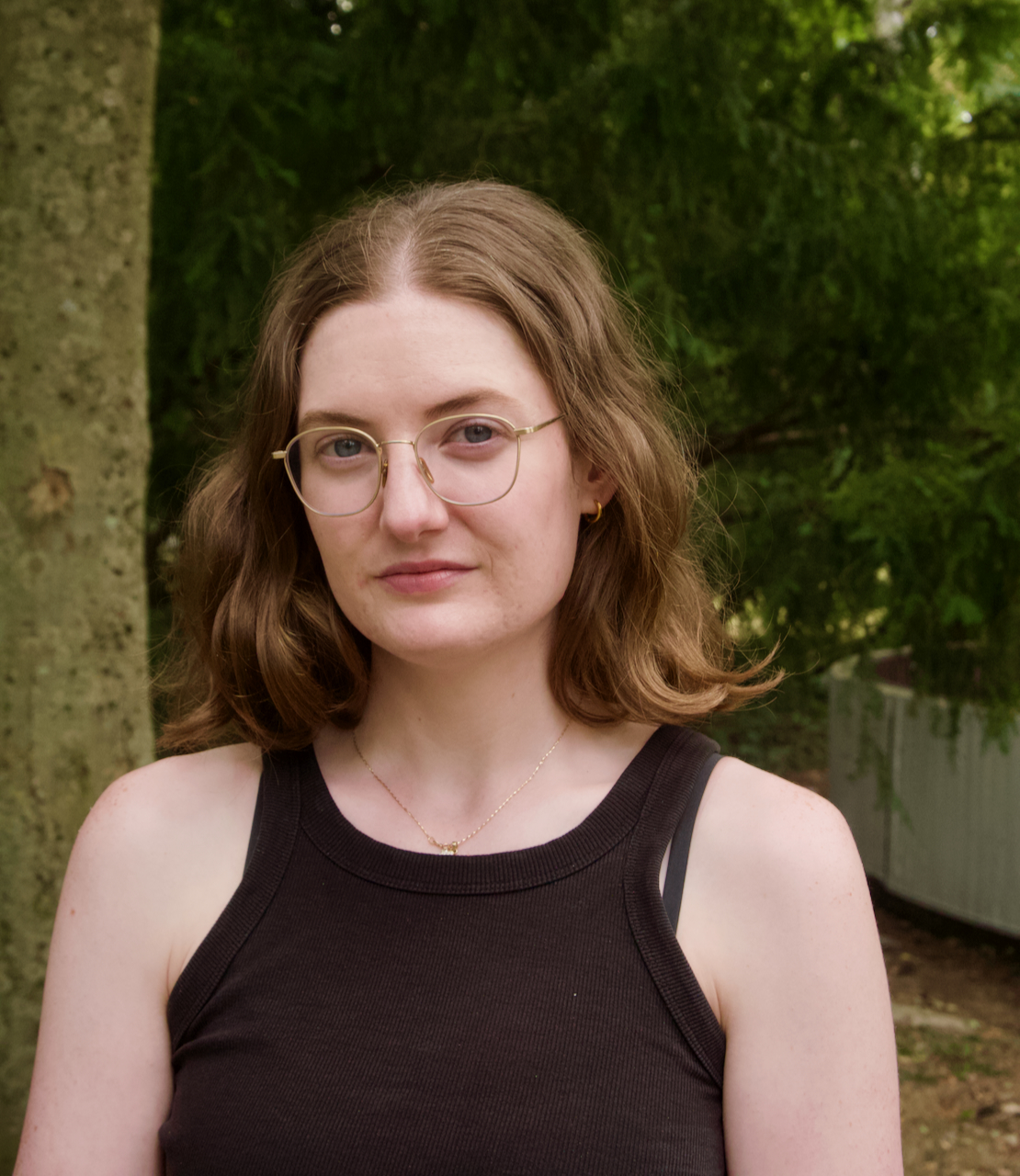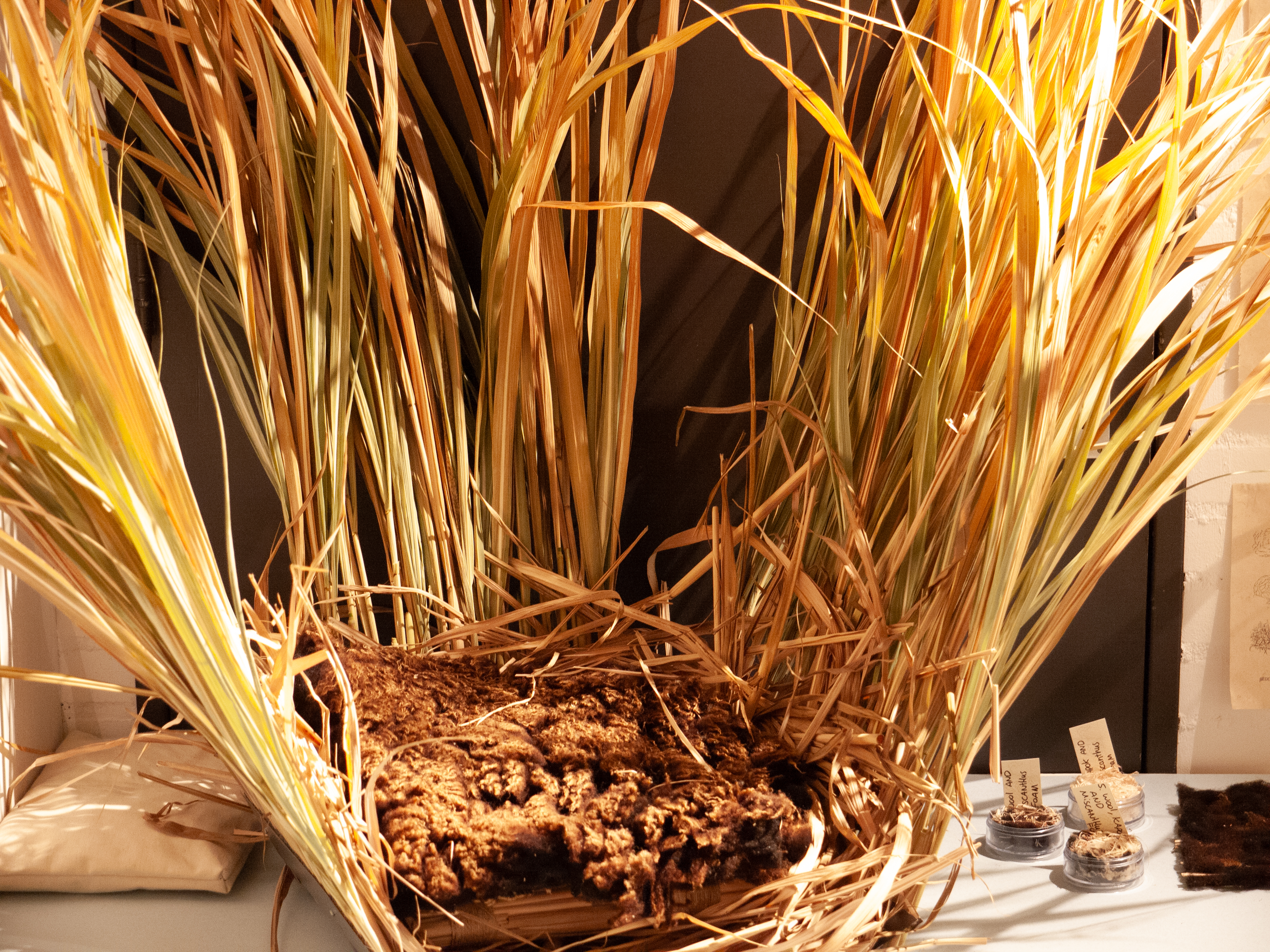Anne Weijers is a theory tutor at Willem de Kooning Academy, specializing in illustration and product design. Next to her work at WdKA, she pursues furniture upholstery , engaging in the restoration and upholstery of chairs using traditional techniques. With a deep appreciation for craftsmanship, Anne's dedication to the art of upholstery goes beyond a mere hobby. Her multifaceted expertise brings a unique perspective to her role as a tutor, allowing her to bridge theory and hands-on practice in her teachings. In this interview, you can read more about her artistic interests, experiences at WdKA and goals as a tutor.

What is your branch/subject of knowledge?
I have a background in art history, and I also hold a master's degree in education. Throughout my studies, my focus has always been on art and education. My thesis explored the reception of the female nude in contemporary American figurative oil painting, comparing the portrayal and reception of the female nude by both male and female artists from an erotic perspective. I've always found the feminist art movement to be particularly interesting.
I've had a love-hate relationship with art due to its classical and elitist perception, especially at universities. I believe art should be more inclusive, allowing for non-Western art and craft to be recognized. I strive to make art more appealing to broader audiences, as I believe art education is crucial for visual literacy and personal growth. Art has the power to provide different perspectives and foster empathy.
In my teaching roles, I cover design history in product design and illustration history to illustration students.
Why did you start working at WdKA?
I had thaught courses at various universities, but I found it was not the environment I felt comfortable in or that fitted my educational vision. Willem de Kooning Academy offered more possibilities, a greater openness to change, and a space for critical reflections. That's what attracted me to work here. The atmosphere is open and conducive to innovation.
I always knew I wanted to work in education. I had previously done an internship at a secondary school, but it didn't align with my teaching aspirations. However, it provided me with valuable teaching experience. When I was looking for a job, I took on various side jobs at different museums, schools and universities to gain more experience. Then, an opportunity arose to temporarily fill in for the theory teacher of product design at WdKA. It was a great chance to work at an art academy, something I was always interested in. I was very happy that I could stay as a theory tutor at both Product Design and Illustration.
What do you love about teaching?
I truly enjoy working with art academy students, since they are the future makers. Whether it's product designers or visual communication through illustrations, they always bring forth fascinating ideas. As a tutor, I guide them and provide relevant resources, but I'm also genuinely interested in their perspectives and ideas. It's a reciprocal learning experience, and I find myself constantly learning from them.
I am also passionate about research, but I believe that research should serve the improvement of education. As a teacher, I have an obligation to stay informed and keep my educational materials up to date, so I can provide students with a contemporary context in their respective field. Also, you can possess all the knowledge in the world, but if you don’t know how to transfer it, how to translate it into a classroom, it’s useless. New insights into effective didactics appear regularly and I like to participate in workshops to keep myself updated on the differnt insights in the educational field.
What defines you as a tutor?
I like to think that I have an open and democratic teaching approach. I am approachable and open to ideas and suggestions. I aim to help students become well-informed about the topics that interest them. In theory classes, I provide texts for them to read and engage in discussions about philosophical, theoretical, and historical aspects. This allows students to form their own informed opinions and think critically about their position within the art world.
Do you face any struggles teaching theory at WdKA?
I have encountered some resistance from students toward theory, which I understand from their perspective as it could be perceived as ‘useless’: when you come here to learn to make things, how is theory going to help? I started to consider their viewpoint and explore how I can make theory more valuable to their needs. One way is by establishing better connections between theory (history, context) and their practical projects. I often collaborate and communicate with other major teachers to ensure I can link the theory class content with their projects. By demonstrating these connections and their relevance, students start to realize the value of theory. Although not all students may be equally interested, I believe our team has done a good job of making theory more engaging and valuable for them.
What is your goal as a tutor?
My ultimate goal is to witness the growth and development of students in every possible way. I have the privilege of teaching them in their first and second years, allowing me to observe their progress in terms of skills, critical thinking, broadening their perspectives, and improving their presentation abilities. It is truly rewarding to witness their progression over time and see them succeed.
What is something most students don't know about you that you would like to share?
I don't often share much about myself with students, but one interesting aspect about me is that I am a huge fan of punk rock. Currently, one of my favorite bands is Frank Carter & the Rattlesnakes, whose lead singer is a feminist punk rocker. Although I don't participate in mosh pits, I really enjoy their music and going to concerts. Next to that, I also have two wiener dogs who bring a lot of joy to my life.


